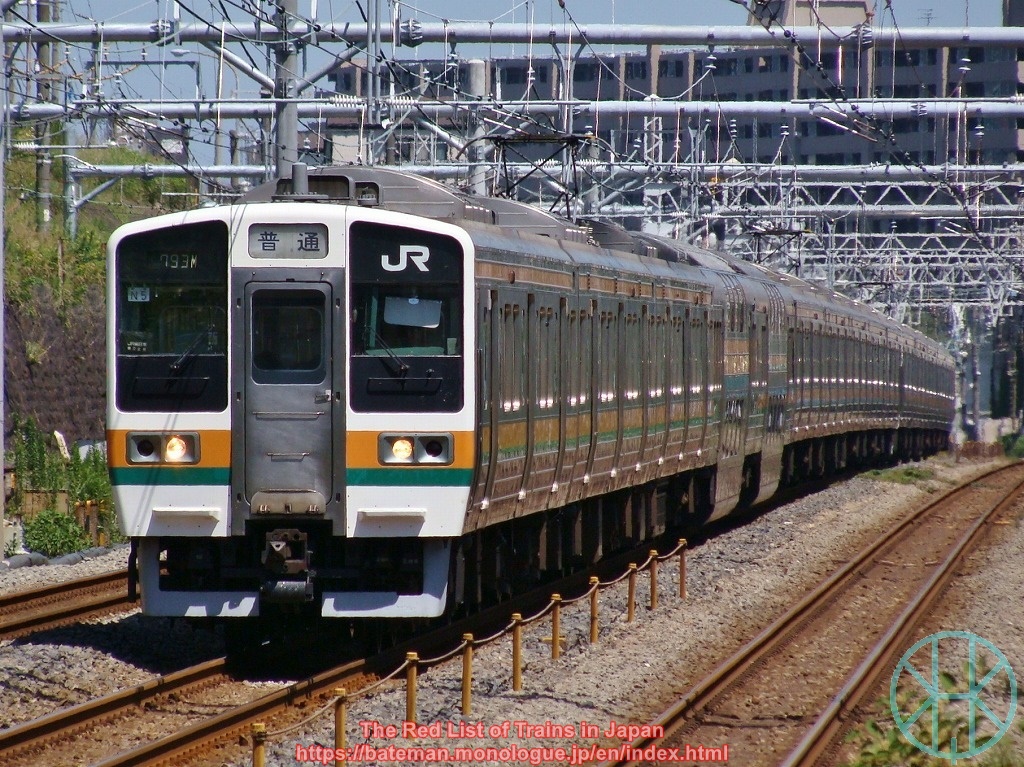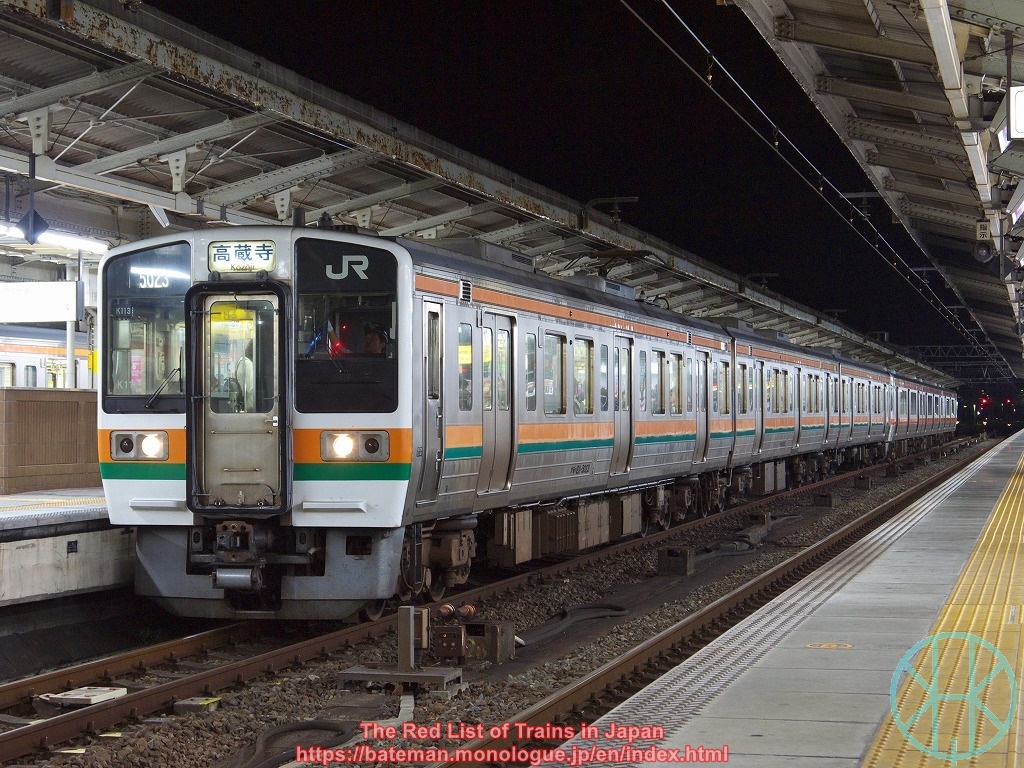JNR 211 series

Data (as of 29 Nov 2025)
| Status: | Vulnerable |
| (JR East) | |
| Extinct | |
| (JR Central, JR West) | |
| Least Concern | |
| (Ryutetsu, Sangi) | |
| Constructed in: | 1985-91 |
| Number built: | 827* |
| Registered: | 346 |
*Including 24 Green Car coaches converted from 113 series.
History
The 211 series was developed by Japanese National Railways as a completely new suburban EMU type, replacing 113 series and 115 series. Unlike those predecessors, the 211 series trains have stainless steel bodies (except Super Saloon Yumeji, which is described below) and regenerative brakes. 258 carriages were introduced by JNR to major suburban lines in Greater Tokyo Area (i.e. Tokaido Main, Takasaki and Tohoku Main Lines) as well as Tokaido Main Line in Nagoya area. 569 more were introduced by three JRs.
JR East had used the 211 series on three major lines mentioned above until 2014. They formed up to 15 coaches including two Green Cars (first class), and they were also used on the early days of Shonan-Shinjuku Line. In addition, several five-carriage units were used in Chiba Prefecture until 2013. Many of them were reallocated to northern Greater Tokyo Area and Chuo Main Line.
JR Central introduced the series to Nagoya and Shizuoka area. Eight carriages introduced by JNR were initially painted blue, but they were changed to Shonan Livery stripes in 1988 like the rest of them. The series was widely used on Chuo Main, Kansai Main and Tokaido Main Lines as well as Gotemba and Minobu Lines, but all of them retired in 2025. A few units were resold to Ryutetsu in Chiba Prefecture and Sangi Railway in Mie Prefecture.
JR West had only two carriages built in 1988, which were formed three coaches with one 213 series carriage. The unit was called Super Saloon Yumeji, a de facto "Joyful Train". It was mainly used for rail tours as well as Marine Liner services (Okayama - Takamatsu), but retired in 2010.
Current Operations & Future Prospects
JR East allocates the 211 series to Nagano and Takasaki depots, where trains have been shortened to three, four or six coaches per unit. Those in Nagano are used for stopping services on Chuo Main Line (Tachikawa - Nakatsugawa) as well as Oito, Shin-etsu Main and Shinonoi Lines. Furthermore, they are used for through-services towards Iida Line of JR Central and Fujikyu Railway.
Those in Takasaki are used for Jōetsu Line as well as Agatsuma, Ryōmō and Shin-etsu Lines. JR East will replace some of them in Nagano with E131 series in "the latter half of the financial year 2026".
Ryutetsu in Chiba Prefecture acquired four two-car units for Nagareyama Line. They are likely to renamed, but the company has not announced it yet. The first unit is expected to enter service in 2026.
Sangi Railway in Mie Prefecture acquired 12 three-car units for Sangi Line to replace 60-year-old trains. One of them, now called 5000 series entered service in 2025, and more will follow in due course.
Photos

Those on Tokaido Main Line (Tokyo Area) retired in 2012, three years before Ueno-Tokyo Line was opened.

Many of them were reallocated to Nagano and repainted pale blue and grey.

Some 211 series in Chiba Prefecture had two different pantographs, to defrost overhead wires.

Those owned by JR Central often coupled with 313 series.
(Updated: 29 Nov 2025)
